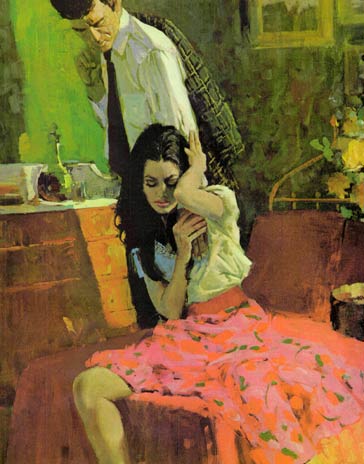Famous Contributors: John le Carré
In 51 years as a writer, John le Carré has published just four short stories. Two of them were in The Saturday Evening Post.
A month after le Carré’s fifth novel was released in bookstores, “What Ritual Is Being Observed Tonight?” appeared in a November 1968 issue. (Read the entire story here.)
It is a good example of the author’s skill with language, his unerring ear for dialogue, and his sharp eye for the telling detail. However, the story does not involve le Carré’s usual world of international politics and espionage. Instead, it gives us a glimpse into the world he knew during a seven-year hiatus from active intelligence work, when he earned a degree at Oxford and taught at Eton College. In 1959, le Carré—then known only as David Cornwell—joined Britain’s foreign-intelligence service. He worked undercover in Germany, directing spies, interrogating suspected double agents, and gathering intelligence on Soviet activity. He also began writing fiction and turned out two mystery stories set in the world of spies.
With his third book, The Spy Who Came In From The Cold, he became a best-selling author. The book was highly successful, even before it was made into a movie with Richard Burton. His sudden fame encouraged le Carré to take up writing as a full-time career. The decision was well timed, since a top British agent had just fled to Russia, offering the Soviets the names and backgrounds of Britain’s undercover agents—presumably including le Carré’s.
Le Carré is now regarded as one of the foremost authors of spy novels. However, his spies exist in an entirely different world than the one in which the James Bond spy thrillers were set. Le Carré’s secret agents usually work in drab offices and unromantic cities, amid moral ambiguities, and their operations are as likely to fail as succeed. Yet, this more realistic view of the intelligence operations has proved very popular with readers.
While there isn’t a breath of espionage in the following story, it does center on a theme that has continually intrigued the author: the conflict between the heart and the mind, the struggle between the intellectual and the lover. It is a rare gem that a lesser writer might have stretched into a too-long novel, and it features a resolution that you might not expect from the creator of The Russia House; The Constant Gardener; A Perfect Spy; and Tinker, Tailor, Soldier, Spy.

